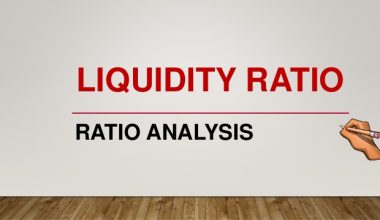Let’s have a look at what stocks are before we get into the different types of stock market calculators. A stock (sometimes called equity) is a financial instrument that reflects ownership of a portion of a company. This entitles the stockholder to a share of the corporation’s assets and profits according to the amount of stock they own. “Shares” are the units of stock.
Stocks are the foundation of many individual investors’ portfolios and are bought and sold mostly on stock exchanges, but private trades are possible. These deals must comply with federal restrictions designed to safeguard investors from deceptive activities.
They have historically outperformed most other assets over time. The majority of internet stockbrokers sell these assets.
In this article, as you continue to read, you will have a clear understanding of how you can grow your investment in the stock market.
What is a Stock?
A stock is a sort of security that gives the holder a portion of a company’s ownership. The holder of this stock may be entitled to a percentage of the company’s earnings in the form of dividends.
Stocks can be divided into two categories: common and preferred. Common stockholders are entitled to dividends and the opportunity to vote at shareholder meetings, whereas preferred stockholders have limited or no voting rights.
Preferred investors often receive bigger dividend payouts and a greater claim on assets in the case of liquidation than common stockholders.
Demystifying Stocks
Corporations issue (sell) stock to raise funds to conduct their businesses. The stockholder purchased a piece of the corporation shares and may be entitled to a portion of its assets and earnings, depending on the type of shares acquired. To put it another way, a shareholder has become a shareholder of the issuing firm.
The number of shares a person owns about the number of outstanding shares determines ownership. For example, if a firm has 1,000 outstanding shares of stock and one person owns 100 of them, that person owns and has a claim to 10% of the company’s assets and earnings.
Corporations do not own stockholders; stockholders possess shares issued by corporations. Corporations, on the other hand, are treated differently by the law because they are considered legal people. To put it another way, corporations can file taxes, borrow money, own property, be sued, and so on. The concept of a corporation as a “person” implies that it owns its own assets. The corporation, not the stockholders, owns a corporate office with chairs and tables.
Why Invest In Stock?
To make money, of course. But, Let’s look at various other benefits of investing in stocks.
Long-term equities returns have historically outperformed cash and fixed-income investments such as bonds. Stock prices, on the other hand, tend to grow and decrease over time. Because stock market fluctuations tend to smooth out over longer periods of time, investors may want to consider a long-term perspective for their equity portfolio.
Taxes and inflation might affect your net worth. Long-term, equity investments can provide investors with better tax treatment, reducing or eliminating the negative effects of taxes and inflation.
Dividends or special distributions are paid to shareholders by some companies. These payments can supplement your investment income and increase your return, while the favorable tax treatment of Canadian equities can help you keep more money in your pocket.
Is It Possible to Amass a Fortune From Trading Stocks Alone?
Assuming you have the patience necessary and are aware that it will normally take some time, investing in the stock market is one of the greatest ways, if not the best way, to amass a significant amount of wealth. It typically takes a number of years for the value of a stock to climb by 1,000 or even 10,000% before it can be considered successful.
Is 10% ROI on Stocks Considered Good?
For long-term investments in the stock market, a return on investment (ROI) of at least 10% per year on average is considered satisfactory by the vast majority of investors. Having said that, bear in mind that this is merely an average. There will be years that produce lower returns, some of which may even produce negative returns.
How to Calculate Stock Gain
Here is a step-by-step guide to calculating your stock gains:
Step 1
Maintain meticulous records of all stock transactions, no matter how minor. Include any fees and commissions paid when buying or selling stocks.
Step 2
Calculate the cost of your investment. Add up the cost of your stock, as well as any charges. For example, if you paid $10 per share for 100 shares of XYZ Company and paid a $20 commission, your total investment cost is $1,020.
Step 3
Using a stock market calculator, Calculate the total cost of your investment if you purchased shares of the same stock at different times. Calculate each transaction’s investment cost, then add them all up.
Step 4
Make a cost basis calculation. Your total investment cost, plus any fees you pay when selling the shares, is your cost basis. Your cost basis is $1,045 if your entire investment in 100 shares of XYZ stock is $1,020 and you paid $25 to sell the stock.
Step 5
Choose the shares you want to sell if you are liquidating only a portion of your investment. Unless you specify which shares you’re selling, the IRS will presume you’re selling the first ones you bought. Before selling the stock, notify your broker of the shares you want to sell and get written confirmation.
Step 6
Use your stock market calculator to subtract your cost basis from the funds you received when you sold the shares to calculate your gain. Your revenues would be $2,000 if you sold 100 shares of XYZ stock at $20 a share. After deducting your $1,045 cost basis, you have a profit of $955.
How to Calculate Stock Profit?
Here’s how to calculate stock profit using the stock formula (our stock market profit calculator uses this exact formula).
- Total Buy Price = shares * buy price + commissions
- Sum Sell Price = shares * sell price + commission
- Total Profit or Loss = Total Buy Price – Total Sell Price
For example, if you bought 100 shares of a stock for $5 and sold it for $6, you will have made a profit of $100. Assume the commission cost is $0. Here’s how you’d go about doing the math.
Total Buy Price = 100 * $5 = $500
Sum Sell Price = 100* $6 = $600
Total Profit = $600 – $500 = $100
How to Calculate Stock Return Formula
The formula for calculating stock profit and return on investment (ROI) is as follows:
Profit = [(SP x NS) + DR – SC] – [(BP x NS) + BC)]
| SP | = | Selling price per share |
| NS | = | Number of Shares |
| DR | = | Dividends received during the ownership period |
| SC | = | Total sales commission paid to sell the shares |
| BP | = | Buy price per share |
| BC | = | Total commission paid to buy the shares |
Return = Profit / ((BP * NS) + BC)
How to Calculate the Return on Initial Investment of Preferred Stock with stock market calculator
Preferred stock is a type of stock that pays a consistent, fixed dividend rather than the significant price volatility that might occur with common stock.
When owning preferred stock, it’s critical to assess your return on the initial investment to see how well it meets your expectations. The entire money you receive from the stock as a percentage of the amount you spent for it is represented by this return.
It does not include any returns from additional shares purchased after your first purchase, such as dividend reinvested shares.
Step one
Using the appropriate stock market calculator, multiply the price per preferred stock share by the number of shares you purchased. Let’s say you paid $25.50 a share for 50 shares of preferred stock. To get $1,275, multiply 50 by $25.50.
Step two
To calculate your total original investment, add any commissions or brokerage fees you paid to your Step 1 result. Assume you paid a commission of $10 in this case. To get $1,285, add $10 to $1,275.
Step three
Any financial website that gives stock information and a stock market calculator is a good place to start. In the stock quote text box, type the preferred stock’s ticker symbol in capital letters. Find the stock’s current market price by clicking “Get Quote.” If you’ve previously sold the shares, use the selling price instead. Assume you still own the stock, which is currently trading at $26.75.
Step four
Multiply the current price by the number of shares you bought when you first bought them. Multiply $26.75 by 50 to get $1,337.50 in this example.
Step five
Subtract your initial investment from the result obtained in Step 4. Subtract any sales commissions you paid if you’ve already sold the shares.
Step six
Divide the dividends you earned per share by the number of shares you purchased in the beginning. This result should be included in your Step 5 result. Assume you’ve received $3 in dividends per share during your ownership of the stock. To get $150, multiply $3 by 50. To get $202.50, multiply $150 by $52.50.
Step seven
To determine your return on the initial investment as a percentage, divide your Step 6 result by your Step 2 result and multiply by 100. It’s better if the percentage is higher. If the percentage is negative, that means you lost money on the investment. To finish the example, divide $202.50 by $1,285 and you’ll get 0.158. To generate a 15.8% return on the original investment, multiply 0.158 by 100.
Present Value of Stock – Constant Growth
The expected dividends to be paid divided by the difference between the needed rate of return and the growth rate is the present value of a stock with constant growth.
One of the formulas used in the dividend discount model is the present value of a stock with constant growth, which is particular to equities that the theory expects will increase indefinitely. One method for valuing stocks based on the present value of future cash flows, or earnings, is the dividend discount model.
How Present Value of Stock with Constant Growth is Derived
The dividend discount model, which sums the discounts of each cash flow to its present value, is used to calculate the present value of a company with constant growth.
The present value of a growing perpetuity formula, displayed at the top of the page for stocks with constant growth, is based on the underlying theoretical assumption that a stock will continue continuously, or in perpetuity.
This assumption is not without criticism, but the present value of a growing perpetuity can be employed as a comparable measure alongside other stock valuation methods for companies that are stable and have a predictable growth rate.
The constant growth rate required to calculate the present value of a stock can be computed as:
g=retention ratio multiplied by ROE
The retention ratio can then be lowered to retained earnings divided by the average stockholder’s equity by multiplying it by the return on equity.
It’s crucial to remember that growth can’t be infinitely negative or surpass the required rate of return in practice. Non-mathematical reasoning is required for a significant portion of stock valuation to determine the suitable approach.
Required Rate of Return in the Present Value of Stock Formula
A few alternative strategies can be used to determine the needed rate of return variable in the formula for valuing a stock with constant growth.
The capital asset pricing model is one way for determining the needed rate of return.

Another option is to calculate the required rate of return based on the current value of dividends. This method also calculates the needed rate of return by rearranging the present value of a rising perpetuity formula.
After rearranging the formula, the result is as follows:

The arbitrage pricing theory, which is similar to the capital asset pricing model but uses different risk variables and their betas to determine the total risk premium for the stock, can also be employed.
Online Stock calculator
Here are the various stock market calculator:
- Stock Average Calculator
- Good calculators
- Fair value calculator
- stock price calculator
Stock Average Calculator
When you buy the same stock many times, the stock average calculator determines the average cost. The average down or average up calculator will calculate the average cost. If you buy the same stock more than once, keep track of each transaction separately.
Good calculator
This simple stock calculator can help you figure out how much money you’ll make or lose when you purchase and sell stocks. It also determines the break-even share price and the return on investment for equities.
Fair value calculator
This is a basic discounted model calculator to assist you in determining a company’s fair value by forecasting earnings per share (EPS). You may evaluate a company’s intrinsic worth using a few simple numbers.
Stock Price Calculator
This free online Stock Price Calculator can help you figure out how much you can spend for stock while still earning the required rate of return.
The calculator’s pricing technique is based on the current dividend and the historical growth rate.
What is the Typical Return that One Might Expect from the Stock Market?
According to the S&P 500 index, the typical return on the stock market has been around 10% per year over the course of practically the whole last century. There are certain years in which the market returns a greater amount than that, and there are other years in which it returns a lower amount.
Where Should One Put their Money for the Next Five Years?
You should seriously consider investing in one or more of the following five-year investment plans, all of which are listed below:
- ULIPs.
- Fixed Deposits:
- Traditional Plans.
- Liquid Funds:
- Savings Account:
- Recurring Deposits: …
- Monthly Income Schemes:
Conclusion
Stocks are the foundation of many individual investors’ portfolios and are bought and sold mostly on stock exchanges, but private trades are possible. These deals must comply with federal restrictions designed to safeguard investors from deceptive activities. They have historically outperformed most other assets over time. The majority of internet stock brokers sell these assets.
We also Recommend
- Equity Capital Market (ECM): Detailed Guide with Example
- Stockholder Equity: How To Calculate Stockholders’ Equity
- Stock Valuation: Overview, & Effective Valuation Methods
- Book-to-Market Ratio: Definition, Formula, and Calculations
- Liquid Assets: Is Stock a Liquid Asset? Meaning and Practical Examples
- Roblox Stock: How to Invest in Roblox Stocks (+ Definitive Guide)
- The Playbook of Long-Term Stock Investing
FAQs
How to Calculate the Value of Stocks?
To use the dividend growth model to assess the value of the common stock, multiply the current dividend by the decimal equivalent of the growth percentage (dividend x (1 + growth rate) to get the future dividend.
Finally, the difference between the decimal equivalent of the expected rate of return and the decimal equivalent of the growth % is used to divide the future dividend (future dividend (expected rate of return – growth rate)).
What are stocks?
Stocks, by definition, are certificates that entitle you to a portion of a company’s ownership. For example, if a firm has 100 existing shares of stock and you acquire five, you will be entitled to 5% of the company’s assets and earnings.
Unlike bonds, stocks allow you to become a “shareholder” in the company. There are two sorts of stocks: common and preferred. Common stocks offer you the ability to vote at shareholder meetings. The latter allows you to vote but often gives you a larger portion of the assets.
How is the stock price determined?
During an initial public offering, a company is valued as it enters the market (IPO). Following this event, the company’s entire worth is calculated. The price of a single share is calculated by dividing the total value by the number of issued stocks.
However, after the company is listed on the stock exchange, the stock price fluctuates based on supply and demand.
Is stock investment legit or scam?
Yes, stocks are a legit investment, You already know how much sense it makes to invest in stocks now that you know your stock profit. However, you can calculate several indicators to determine the profitability of such an investment.
- Present Value Formula: Definitions, Examples, Formula & Calculations
- Ordinary Annuity: Formula & How to Calculate
- Dividend Mutual Funds: Definition, How they Work, Pros & Cons
- DIVIDEND STOCKS: Understanding Dividend Stocks and How to Invest
- Dividend Yield: Meaning, Detailed Examples, Formula & Free Investor Tips






